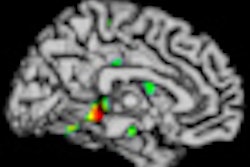Diffusion-tensor MR images have confirmed that aerobically fit children have more favorable white-matter tracts in their brains than their less fit peers, thus improving their chances for greater cognitive function.
According to a study published online August 19 in Frontiers in Human Neuroscience, youngsters who are more physically fit have more fibrous and compact white-matter tracts in certain brain regions than their more sedentary peers. The finding adds evidence to how aerobic exercise changes the brain in positive ways.
This study also extends previous work by lead author Laura Chaddock-Heyman, a postdoctoral researcher at the University of Illinois, and colleagues, which suggested that enhanced white-matter structure may be one reason why more active children outperform their lower fit peers on cognitive tasks and in the classroom.
Past research has noted that aerobic fitness plays an important role in the brain health of children in terms of brain structure and function, including gray-matter volumes of the hippocampus, basal ganglia, and functional brain networks, the study authors noted.
"Still unknown is the relationship between aerobic fitness and the microstructure of white-matter tracts during childhood," the authors wrote. "The structure of white matter is important for efficient transmission of information between gray matter, as well as for the integration of brain areas into structural networks to support cognitive function."
DTI-MRI is considered one of the gold standard measures for imaging white-matter microstructure. For white matter, less water diffusion means the tissue is more fibrous and compact, which is the most favorable result.
"DTI helps us gain insight into white-matter structure by measuring the diffusion of water around white-matter tracts," Chaddock-Heyman told AuntMinnie.com in an email. "If water freely flows in and out of the tract, this suggests a less dense, fibrous tract compared to a tract in which water does not diffuse into the tract."
The study used a 3-tesla head-only MRI system (Allegra, Siemens Healthcare) to acquire DTI-MR images of five white-matter tracts in the brains of the 24 children. There were 12 children (seven boys, five girls) in the more physically fit group and 12 children (eight boys, four girls) in the less fit group.
Researchers also accounted for variables such as the child's social and economic status, timing of puberty, IQ, and learning disabilities, such as attention-deficit hyperactivity disorder (ADHD), which may skew the results.
DTI-MR images revealed significant fitness-related differences in the corpus callosum, superior longitudinal fasciculus, and superior corona radiata. All three brain regions play roles in attention and memory.
"Aerobically fit children showed increased white-matter microstructure, increased white-matter integrity, or higher estimates of compact, fibrous tracts, in three white-matter tracts that integrate regions throughout the brain, compared to lower fit children," Chaddock-Heyman said.
Researchers currently are in the second year of a five-year randomized controlled trial to determine whether white-matter tract integrity improves in children who begin a new physical fitness routine and maintain it over time, specifically looking for changes in aerobic fitness, brain structure and function, and genetic regulation.


.fFmgij6Hin.png?auto=compress%2Cformat&fit=crop&h=100&q=70&w=100)





.fFmgij6Hin.png?auto=compress%2Cformat&fit=crop&h=167&q=70&w=250)











